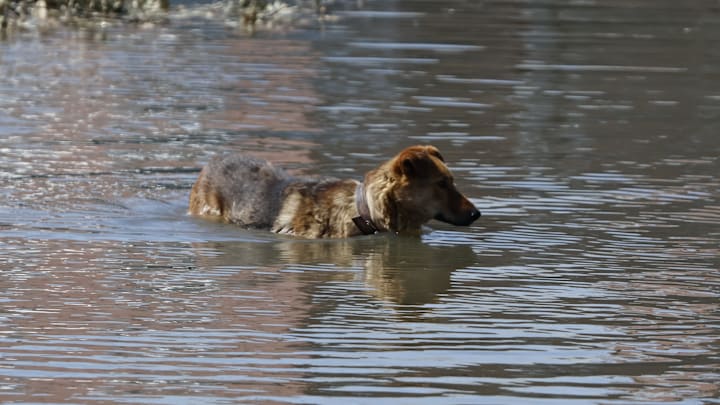It’s the worry of every dog owner: what if the water your dog is happily drinking and playing in could kill them? And now, thanks to a “dog-killing flatworm” discovered in a river in California, it might.
The news was first reported by the Sacramento Bee, though it originally came from a group of scientists from UC Riverside’s Department of Nematology. Commonly referred to as a liver fluke, the official, scientific name is “Heterobilharzia americana.”
So what is this flatworm, and how can you make sure your pets are safe from its potentially deadly impact?
What is the Heterobilharzia americana, aka liver fluke? What does it do to dogs?
As UCR nematology professor Adler Dillman told the UC Riverside news, “Dogs can die from this infection, so we are hoping to raise public awareness that it’s there. If you’re swimming in the Colorado River with them, your pets are in peril.”
The flatworm was previously only found in regions of Texas and other Gulf Coast states, but has now seemingly expanded to California, as well. While the flatworm has only been spotted so far on the banks of the Colorado River… It’s a river. And it runs on the border of California and Arizona, so there’s every chance the flatworm is more widespread on the West Coast than has been reported.
Here’s how it works: the infection is actually carried by several species of snails. After the flatworm transforms inside of the snail, it’s possible the snail can shed the flatworm into a river or other body of water. If a dog or other animal drinks that water, there’s a chance they could get infected.
“It gets into the veins of the intestinal lining, and that’s where it develops into an adult and mates,” continued Dillman. “The presence of the adults in the veins isn’t the problem. It’s the eggs that get into the lungs, spleen, liver, and heart. The immune system tries to deal with it, and hard clusters of immune cells called granulomas form. Eventually the organ tissues stop functioning.”
The truly horrifying part about all this is that it may take several months before symptoms appear, meaning your pet could get increasingly sick over a long period of time without you knowing it was connected to the infected river water.
What are the symptoms of a Heterobilharzia infection?
We’ll let Emily Beeler, a veterinarian with the Los Angeles County Department of Public Health, explain: “Symptoms start gradually with a loss of appetite, and eventually include vomiting, diarrhea, profound weight loss, and signs of liver disease.”
So, nothing good.

How can you keep dogs safe from the liver fluke?
Here’s the good news: since 2019, there have only been 11 documented cases of infection. Obviously this is upsetting, and one dog died. But we are not quite at epidemic levels as of yet.
The short version of how to keep your dogs safe from Heterobilharzia americana is to make sure they’re not regularly drinking or playing in river water, particularly in the Colorado River or any of its tributaries or runoff.
That said, treatment is an option. Beeler continued that, “If your dog has these symptoms after swimming in the Colorado River, it’s a good precaution to ask your veterinarian for a simple fecal test.”
Treatment, according to Beeler, involves “multiple medications and close monitoring of the dog by a veterinarian.” But as long as you are proactive, you can get ahead of the infection.
There’s also no real chance of humans getting infected, though the worms can cause a rash. And if you happen to be getting your water from the Colorado River, there’s good news there, too.
“Compared to other pathogens these worms are fairly large,” Dillman added. “They can easily be filtered out with common water purification strategies.”
So there you go! Monitor your dog, don’t play in the Colorado River, and your best bud should be okay from this potentially deadly flatworm.
